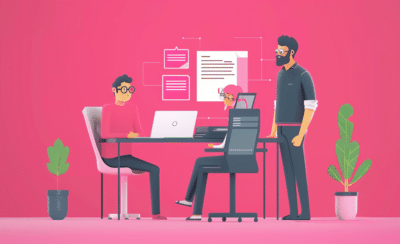With the Cambrian explosion of digital everything continuing in what seems like perpetuity, so do the ways founders try to break into their respective markets. We already know this. But between your (least) favorite influencers subliminally advertising to you, and your (least) favorite phone calls blowing up your phone, there has been one relatively ancient product launch strategy that’s dominated for both users and businesses alike: the freemium model.
This GTM strategy offers a basic version of a product for free while providing premium features at a cost. And, today, we’ll deep dive into the freemium model, uncovering its principles, exploring its effectiveness, and providing insights into successful implementation.
TLDR; Contents
Understanding The Freemium Model: Origins & Principles
The freemium model is a business model, essentially, in which the basic version of a product is offered for free, but additional premium features are available for a fee. The portmanteau “freemium” was coined in 2006, but this model has been around for almost 50 years.
The freemium model has three core principles:
- The basic version of the product must be free.
- The premium version has to offer significant value to users.
- The premium features must be optional.
Benefits for both users and businesses
For users, the freemium model offers a low-risk way to try out a new product. But for businesses, the freemium model can help increase user adoption and engagement, as well as provide a revenue stream from premium features.
Why the Freemium Model Works
The freemium model leverages fundamental principles of human psychology and consumer behavior to drive engagement and conversion.
One of the reasons why the freemium model works is that it taps into some fundamental principles of human psychology and consumer behavior. For instance, people tend to value things more when they feel like they own them.
By providing a free version of a product, users are given a taste of the value it provides, creating a sense of ownership. This sense of ownership often motivates users to explore the product more, which, in turn, can drive engagement and conversion.
And, the freemium model leverages the desire for enhanced functionality. By offering a limited product, users are given a glimpse of what the premium version can actually do, which can create a desire for more. This desire—otherwise known as FOMO—often motivates users to upgrade to the premium version, which can generate revenue for the company.
Leveraging user behavior and preferences for future iterations
By offering a free version of the product, businesses can very well attract more users from the get-go and gather valuable data on user behavior and preferences.
This data—real-time information about real users—is precious, especially in early product stages, when it can inform the development of premium features and pricing strategies.
Key Considerations for Using the Freemium Model
A. Choosing the right features for the free version:
When deciding which features to offer for free, it’s essential to strike the fine, fine balance between giving enough value to entice users to try the product—but not giving away too much so that users won’t be compelled to upgrade to the premium version.
Conducting market research and analyzing competitors’ offerings can help businesses identify key features that users are most interested in. User feedback can provide valuable insight, here, into which features are most important.
B. Pricing strategy for premium features:
When developing a pricing strategy for premium features, businesses should consider the value that these features bring to users. Pricing absolutely has to be transparent and easy to understand (!!!), with a clear distinction between the free and premium versions. Do not be the brand that gets a reputation for being tricky with money—it’s a hard one to get away from on Reddit.
Businesses can also consider offering tiered pricing options to capture a broader range of users with varying needs and budgets.
C. Balancing monetization with user experience:
It’s crucial to balance monetization with user experience to ensure that users are not overwhelmed or annoyed by attempts to upsell them to the premium version. Businesses can improve user experience by offering precise and concise messaging about the benefits of upgrading, providing a seamless upgrade process, and offering excellent customer support. Additionally, businesses can consider offering an ad-free experience or other incentives to users who upgrade to the premium version.
Challenges and Their Solutions in Using The Freemium Model
Challenge 1: Finding the right balance between the free and premium versions
This challenge revolves around determining which features should be included in the free version to attract users while reserving certain functionalities for the premium version to incentivize upgrades. Striking this balance is crucial to avoid devaluing the premium offering or alienating potential users with overly restrictive free features.
Solution: Conducting thorough user research
Businesses should conduct comprehensive user research to understand their target audience’s needs, preferences, and willingness to pay. By gathering insights into which features are most valued by users and which are considered premium-worthy, businesses can make informed decisions about feature differentiation between the free and premium versions. Additionally, soliciting feedback from early adopters and conducting A/B testing can help validate assumptions and refine the feature set iteratively.
Challenge 2: Avoiding feature bloat
Feature bloat occurs when a product becomes overloaded with unnecessary or overly complex features, resulting in a bloated user experience that can overwhelm and frustrate users. In the context of the freemium model, feature bloat can detract from the perceived value of the premium version and diminish the overall user experience.
Solution: Iterative product development
To mitigate the risk of feature bloat, businesses should adopt an iterative product development approach focused on delivering value incrementally and prioritizing features based on user feedback and data insights. By releasing minimum viable versions of the product and collecting feedback from early users, businesses can identify and prioritize essential features while deferring or eliminating unnecessary ones. Additionally, regular iteration cycles allow businesses to refine the product based on real-world usage patterns and evolving user needs, ensuring that the product remains lean, focused, and user-centric.
Challenge 3: Maintaining user trust
Maintaining user trust is pretty much a make-or-break for the long-term success of a freemium model implementation, as users must feel confident that their data is secure, their privacy is respected, and their investment in the premium version is worthwhile. Any breach of trust, whether through deceptive marketing practices, intrusive monetization tactics, or subpar product quality, can devastate user confidence and lead to churn.
(Remember—deceptive pricing strategies may change, but Reddit forums are forever.)
Solution: Building a solid community around the product
To build and maintain user trust, businesses should prioritize transparency, authenticity, and engagement in their interactions with users.
Establishing open channels of communication, such as community forums, social media platforms, and customer support channels, allows businesses to facilitate a sense of collective enthusiasm and community around the product while cultivating meaningful relationships with users.
By proactively listening to and addressing user feedback and demonstrating a serious commitment to user satisfaction, companies can firmly establish confidence in their brand and encourage user loyalty and advocacy.
Additionally, providing clear and transparent information about data usage, privacy policies, and pricing structures helps build trust and credibility with users, reinforcing their decision to invest in the premium version of the product.
Best Practices for Maximizing Success
- Continuous iteration and improvement: The freemium model requires continuous iteration and improvement to ensure that users are getting value from the product.
- Building a strong value proposition: The value proposition of the product should be clear and compelling, with a strong emphasis on the benefits of upgrading to the premium version.
- Fostering a community around the product: A strong community helps build up brand loyalty and provide valuable feedback for product development.
Examples of Successful Freemium Models
The freemium model has been uber-widely adopted by various companies across different industries and has very much proven itself to be a successful approach to attract users and generate revenue. Let’s go over a few examples:
Dropbox, for instance, offers a free version of its cloud storage service that allows users to store and share files up to a specific limit. It also offers paid plans with extra storage and features, including advanced sharing options and collaboration tools. This strategy has helped Dropbox acquire a giant user base and generate significant revenue from its paid plans while still offering its free ones.
Similarly, Spotify offers a free version of its music streaming service that includes ads and limitations on certain features, such as offline listening. However, the company also offers premium plans with no ads, unlimited skips, and offline listening. This approach has helped Spotify to become a mammoth music streaming service with a seemingly ever-growing user base that also generates substantial revenue from its premium plans.
Finally, LinkedIn offers a free version of its professional networking platform with which users can create a profile, connect with others, and look for jobs. But it also offers paid, premium plans with which you can send messages to people outside of your network, see who’s viewed your profile, access online courses, and so on.
This strategy has helped LinkedIn to become pretty much The professional networking site and generate significant revenue from its premium plans and ad revenue from its free ones.
To Sum it Up
The freemium model presents a unique opportunity for businesses to grow their customer base, foster brand loyalty, and drive revenue from multiple streams and personas. By utilizing the right strategies and understanding the needs of their target audience, companies can successfully leverage the freemium model to their advantage.
So, if you’re looking to up the ante, consider implementing a freemium offering. But remember, success doesn’t happen overnight—it takes time, effort, and a rather enthusiastic willingness to adapt and iterate. So, start small, measure your results, and make adjustments as needed. With the right approach, a freemium model can be incredibly powerful for entering (and dominating) your market.




